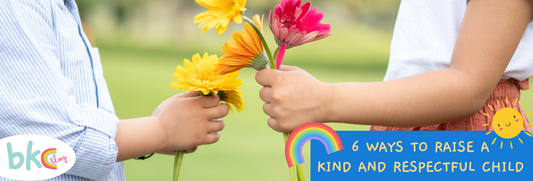Separating your children from ripping each other’s limbs at least thrice a day is probably one of the highlights of your life now. Nurturing a positive sibling relationship is not just important for your children’s growth, but for your sanity as well.

If you have siblings yourself, you would probably remember how competitive your childhood was. From calling “shotgun” on every road trip to ratting your sibling out to your parents to fights that would put Harry Potter and Voldemort’s battle to shame, every day in your household was a new opportunity to exasperate each other.
Now, years later, roles have changed: you just can’t with your young children’s love-hate relationship. They are companions as thick as thieves and rivals in the next glance.
Whether you, your siblings, or your kids love it or not, this relationship is oftentimes the longest “ship” in a person’s life. With shared memories and the unique ability to see through any phoniness, it doesn’t come as a surprise that sibling relationships aren’t very pleasant during childhood.
Experts say that rivalry among siblings starts almost immediately after the second child is born. Festering a rivalry late into the teenage years can potentially turn to resentment, which will be much harder to change. Hence, the onus of nurturing a positive sibling relationship is on the parents. They can ensure this by encouraging kids to participate in group activities, do chores, and have fun together.
To ensure teamwork and dealing with conflict in a controlled environment, we have listed a few activities and games your kids could do:
1. Seek Out My Pair
In this variation of the hide-and-seek game for children aged two years and above, you will need two or more players, and five pairs of puzzle cards.

One player (the seeker) will close their eyes and count, while the others hide all the cards in the set environment. After the seeker calls out “Ready or not, here I come”, they have to find the hidden cards and pair them up correctly. Once the seeker does this, another player takes their turn to be the seeker. If the seeker is unable to find the cards or match them properly, they have to count again.
If you’re wondering why we listed this game here, it is most likely to cause disagreements to some degree among the kids. And our goal is to positively deal with conflict in a controlled environment.
-
If the older kids team up against the younger kid (for instance, by hiding the cards in difficult places), step in and respectfully let them know that their behaviour borders on bullying.
If one of the kids decides to throw a tantrum (for instance, for being asked to be the seeker the second time) during the game, learn why they are having a difficult time. Based on their answer, explain gently to the rest of the party why the game is only fun if all the participants are happy.
Benefits: Develops problem-solving skills.
2. Let’s Build an Imaginary World
This game – ideal for kids aged seven and above – is all about invention. Of stories and characters. Sit your children down with these paper toy monsters and origami dinosaurs. Fold and create paper toys as per instructions.
During the folding process, it is highly likely that at least one child will run out of patience with the others’ pace, perfection, or lack thereof. Guide your kids gently to respect their siblings’ differences.

Encourage them to create an imaginary world: for starters, kids could take turns to name the creatures and label their superpowers. As the activity progresses, let one child narrate the story for 10 minutes, then the next child takes over, and so on.
Anticipate interruption in multiple instances, possibly to add or refute details. Here is where you’ll have to teach your kids to listen to understand their siblings’ points of view. While it may look to you as a small trick to survive this particular game, you are setting your children up to be empathetic in the long run.
Benefits: Develops linguistic skills, and nurtures imagination and creativity.
3. Trust Me with Your Face
In this activity for children above the age of five, the siblings take turns painting each other’s faces. We are not talking about the usual moustache-on-the-face prank. One face is the other’s canvas.
You could always embrace the mess by going straight ahead with the painting. But we suggest paint-proofing your children’s play area by lining newspapers on the floor.
Using a face-painting guide, encourage your kid to paint on their sibling’s face with a non-toxic paint. When one face is done, switch and let the other paint. Ask your children to not look in the mirror until all faces are painted. Examine the ‘canvases’ and enjoy.

Note: We ask you to do this at your discretion so that paint doesn’t go in anyone’s eyes, nose, or mouth.
The reason we love this group activity is that it requires siblings to be in each others’ personal space. For better results in their creative time, kids would need to be gentle with each others’ faces.
Benefits: Improves focus, dexterity, and creativity.
4. Flying Contest
This activity is best enjoyed by kids above six years of age. To give all participants a fair advantage, it is only right to build an aeroplane first. Good thing you can make one out of paper. Here is an easy paper aeroplane tutorial that your kids can follow:
Once the aeroplanes are ready, it’s time to make them pretty. These super-light dot glitter glues look perfect for the runway. Remember to add a light coat so that it doesn’t weigh the planes down. And ready for takeoff!
As the impartial party in the game, you get to choose the starting point. Each child then sends their respective aeroplane in the air to see whose flies the farthest.
No one likes to lose, not even adults. Being outperformed by one’s sibling is even more difficult to stomach. Games such as these – involving fair play and a little competitive nature among siblings – would teach them to be civil with one another, provided you step in and guide them properly. Gradually, being respectful and mindful of fellow beings in the face of conflict becomes second nature.
Benefits: Develops the ability to take instructions.
5. Dare You to Tumble
Well, we are only going to dare to tumble some building blocks, not your kids. This activity requires no instructions to play, just some hands to play with.
For 18 months and up: We don’t need to say twice that kids love water. On hot summer days, get all the siblings in the bathtub and add water. Add some magnetic blocks and encourage them to build in the water.
Note: We ask an adult to be present always while your kids play in the water.
If you don’t want the water element involved, the play area works just fine as well. Encourage the siblings to work together to see how tall they can stack the blocks.

For eight years and up: If your children have been struggling to wind down for bed at night, here is a group activity we are dying for you to try. In their play area, let your kids explore these glow-in-dark magnetic blocks. Encourage them to create anything they want for 30-40 minutes.
Once they are done, switch off the lights in the room. Wait for the collective ‘Wow!’. Goal: To keep your kids engaged in an exciting, yet safe activity; status: achieved.
When your children have the vision to build something together, they have to work together. Since not everyone is evenly paced, it would require 100% teamwork, zero tantrums, and a tremendous amount of patience to finally make their vision a reality.
Benefits: Improves dexterity and creativity, and develops basic engineering skills.
6. Change the Decor
Children need to have a sense of ownership when it comes to their home. It helps them understand they are an indispensable part of the family. Physically, a room does just that. However, when you’re living in a limited-space apartment in a city, your children end up sharing a room. To make them comfortable and confident in their space, it is often encouraged to let them decorate their room.
First, sit your children down and talk to them about decorating their rooms. For younger children who don’t understand decoration yet, you could give them directions: “Do you want to keep a plant on your side of the room?” or “Do you want to put stickers on the bedroom wall?”
For older children, ask them how they would like to incorporate their personalities into their personal space. Encourage them to take time to visualise and note down what they want. Feel free to gently reject impossible ideas, but don’t suppress them.
If your children are not into the activity, run your decor ideas by them: “Mommy is thinking of putting a display shelf for your superheroes. What do you think?”, “Wouldn’t it be cool to have these lights in your room?”, or “Let’s hang these ornaments, shall we?”
Once the hard decisions and purchases are made, let the kids decorate on their own. Emphasise asking them to get help from their siblings in the process.
Note: Make sure a parent handles sharp or electrical items.
When your child decorates their side of the room, it helps translate their personality. Doing this with their siblings helps them appreciate each others’ differences and, in turn, respect one another.
Benefits: Promotes independence, sense of ownership, and decision-making skills.
If you have an adventurous set of kids, you might need to play referee on more than one occasion. Don’t lose hope yet. You need to continue to encourage your kids to work together.
While it may not happen just yet, there will come a time in the not-too-distant future when your children will say to each other, “Remember that time we did this.” Then you can pat yourself on the back.





